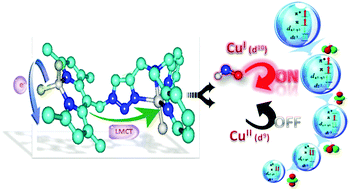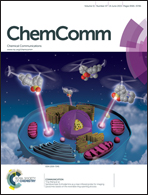The fluorescence regulation mechanism of the paramagnetic metal in a biological HNO sensor†
Abstract
Paramagnetic metals are frequently used to regulate fluorescence emissions in chemical and biological probes. Accurate quantum calculations offer the first regulation theory that quenching is through the competitive nonradiative decay of the mixed fluorophore/metal 3ππ*/dd state isoenergetic to the fluorophore-localized 1ππ* state.


 Please wait while we load your content...
Please wait while we load your content...